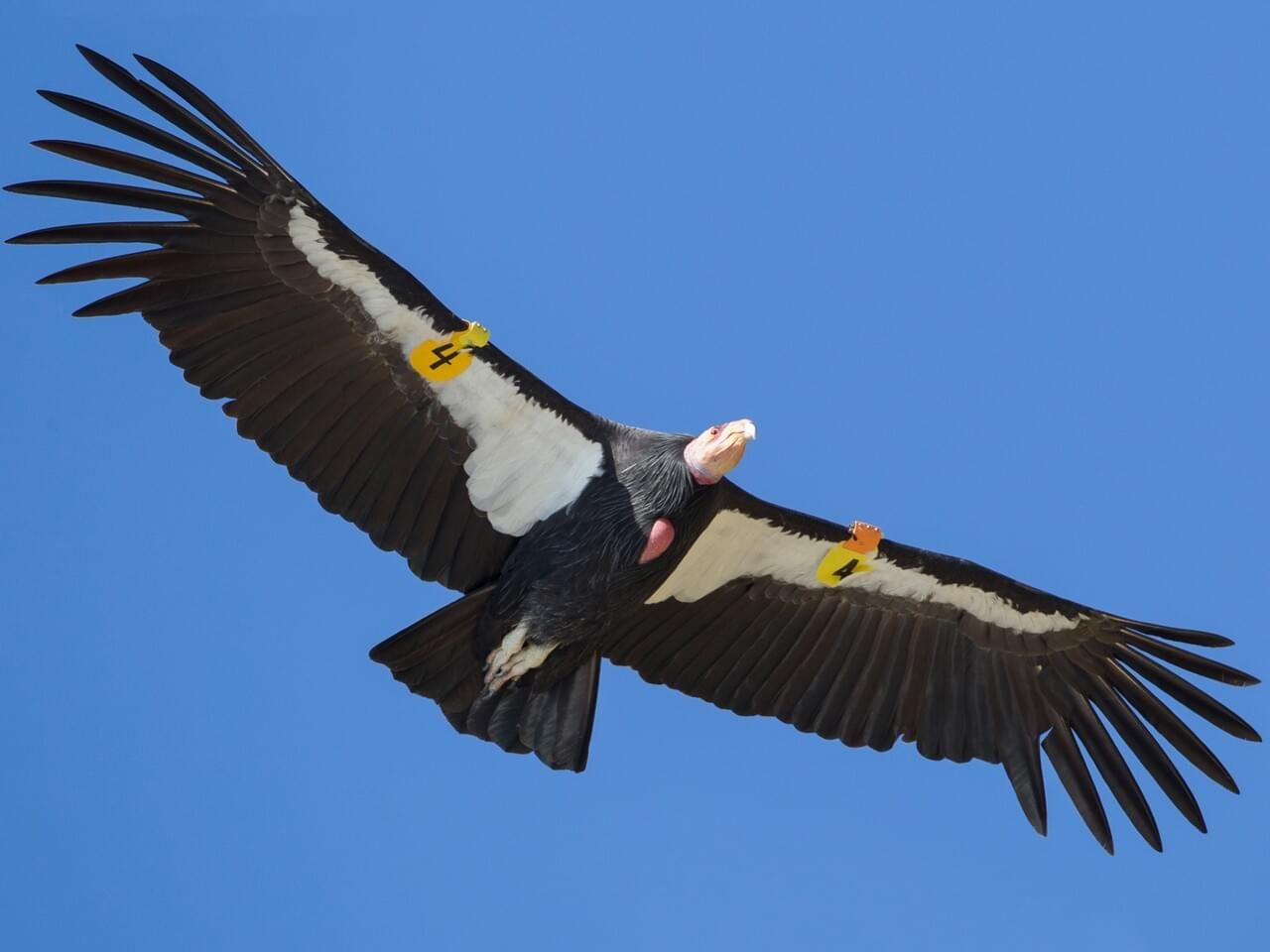Tuleyome's Science Corner: Condors in the Coast Ranges

California Condor by Brian Sullivan/Macaulay Library
Just a couple of hundred years ago California Condors (Gymnogyps californianus) ranged along the Pacific Coast from British Columbia to Baja California. Molok Luyuk, the name of the ridge in the proposed addition to Berryessa Snow Mountain National Monument, means Condor Ridge. They were here once. Could condors fly again over the Berryessa Snow Mountain National Monument?
Condors need big ranges of undeveloped land, rocky cliffs or tree cavities for nesting, and big trees for roosting. They are exclusive scavengers that can travel 200 miles a day on wings that span 9.5 feet—nearly twice the wingspan of turkey vultures. They have white underwing patches near the leading edge of the wing, in contrast to the gray trailing-edge patches of vultures, and they hold their wings nearly flat and have a stable soaring pattern, unlike vultures with their shallow-V wings and rocking soaring pattern.
Condors are very social, curious, and playful birds. They mate for the long term and invest two years of care into each chick, from laying the egg to teaching and feeding the fledgling birds.
This long, slow reproductive period means that it is hard for them to come back from mortal threats, and there are many. Lead shot is the primary cause of death: condors eat particles from pellets left in hunters’ gut piles or animals killed and left by ranchers. But they can also be harmed by microtrash—pieces of glass or plastic or even the tabs from beer cans—that parents feed their chicks, mistaking them for bone chips. Historically, they have also been electrocuted when their enormous wings have contacted two wires while trying to perch on power lines.
In the late 1900s, there were only 27 condors left, all in Southern California. Every single one was captured by 1987 and a careful breeding program was begun, trying to preserve the remaining genetic diversity. It includes a training program to teach condors not to perch on electric lines. In 1993 there were enough condors to begin releasing them to the wild.
Now about 200 condors are in captivity in several breeding centers, and 330 condors are in the wild from Central and Southern California to Arizona. Over half live in mountainous areas of California, in the Coast Ranges from San Jose south to the mountains of Angeles National Forest and north and east through the eastern Sierras to near Lake Tahoe. Condor mortality still outpaces their reproduction in the wild, and releases from captivity are necessary to keep their population up.
Just this spring four young condors were released in Yurok traditional territory, in Redwood National and State Parks. More will be released over the years. Bringing the condor back to their territory was the top wildlife priority for the Yurok people, who prepared for 14 years for their reintroduction, beginning with assessing remaining habitat for foraging and flight corridors and roosting and nesting sites, and building collaborative relationships with many organizations. To the Yurok, these scavengers are symbols of renewal, turning death back into life.
At home, you can see a young condor in the wild on Condor Cam. When in condor habitat, you can protect condors by using and promoting the use of non-lead ammo (required for hunting in California) and picking up microtrash. And someday, with care, collaboration, and a lot of effort, these amazing birds could again soar over Berryessa Snow Mountain National Monument.
Check our one of previous Science Corners with more information about California Condors.
-Amy Boyer
RECENT ARTICLES






